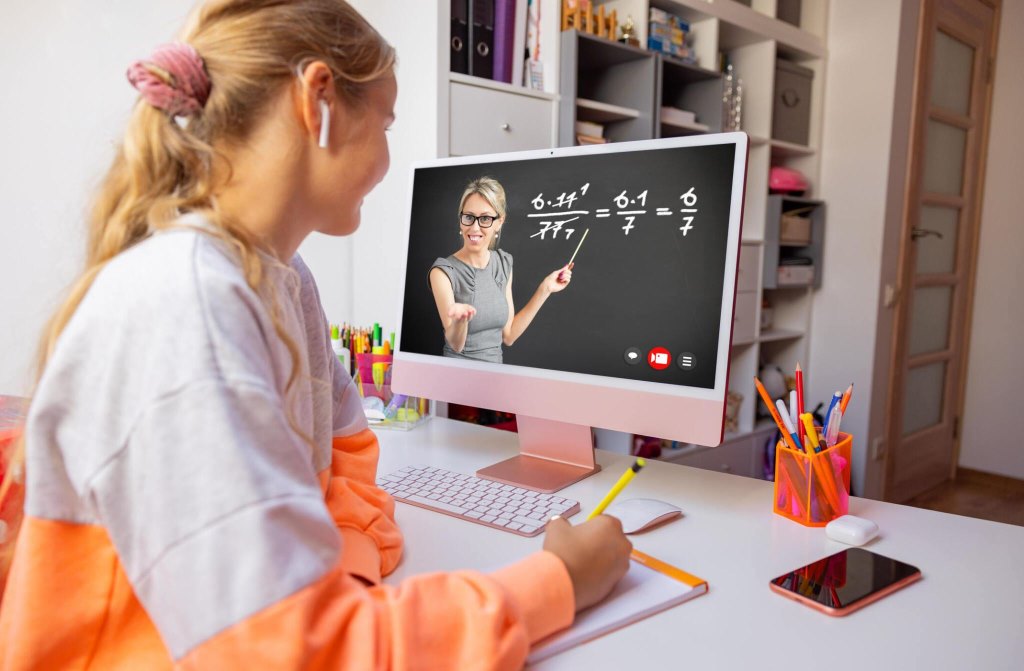In recent years, online education has witnessed a significant surge in popularity, driven by technological advancements and the increasing demand for flexible learning options. One key element that has revolutionized the online learning experience is the integration of 2D animation.
This article explores the profound impact of 2D animation on online education platforms, examining its effectiveness in enhancing engagement, improving comprehension, and breaking through the limitations of traditional educational approaches.
Understanding 2D Animation in Online Education
Education has transcended traditional boundaries in the digital age, reaching learners worldwide through online platforms. As technology continues to evolve, so do the methods of instruction, with 2D animation emerging as a powerful tool for enhancing the online learning experience.
A. Defining 2D Animation
2D animation refers to the creation of moving images in a two-dimensional environment. Unlike 3D animation, which adds depth to characters and scenes, 2D animation relies on the manipulation of flat images to create motion.
It has long been utilized in entertainment media such as cartoons and advertisements but has found a new realm of application in education.
B. Integration into Online Education Platforms
Online education platforms leverage 2D animation to deliver instructional content in a visually engaging and interactive manner.
Through the use of animated characters, diagrams, and illustrations, complex concepts are simplified and made more accessible to learners of all ages and backgrounds.
Advantages of 2D Animation in Online Learning
In the realm of online education, 2D animation serves as a powerful tool with numerous advantages that enhance the learning experience. This section explores some of the key benefits of incorporating 2D animation into online learning platforms.

1. Enhanced Engagement
One of the primary advantages of 2D animation in online education is its ability to capture and maintain learners’ attention.
Animated videos are inherently more engaging than static text or images, as they stimulate both visual and auditory senses. The dynamic nature of animation can pique curiosity, making learning more enjoyable and memorable for students.
2. Personalized Learning Experience
Another key benefit of 2D animation in online education is its capacity for personalization. Educators can tailor animated lessons to cater to the diverse learning styles and preferences of individual students.
Interactive animations enable learners to control the pace of their learning, pause and rewind sections as needed, and receive immediate feedback on their progress.
Applications of 2D Animation in Online Education
2D animation plays a crucial role in enhancing the effectiveness and engagement of online education platforms. This section explores various applications of 2D animation in online learning, highlighting its versatility and impact across different subjects and learning objectives.
1. Explainer Videos
Explainer videos are short animated clips that provide concise explanations of complex topics or processes.
These videos are commonly used in online courses to introduce new concepts, demonstrate problem-solving techniques, or summarize key points.
2. Interactive Simulations
Interactive simulations allow learners to manipulate variables and observe the resulting outcomes in real time.
Whether simulating scientific experiments, historical events, or business scenarios, these interactive animations promote hands-on learning and critical thinking skills.
3. Virtual Laboratories
In fields such as science and engineering, virtual laboratories offer students a risk-free environment to conduct experiments and explore theoretical concepts.
2D animations can recreate laboratory settings and equipment, allowing learners to engage in practical learning experiences without the need for physical resources.
Challenges and Considerations
While 2D animation offers numerous benefits for enhancing online learning experiences, its implementation also presents certain challenges and considerations that educators and content creators must address.
1. Technical Requirements
Creating high-quality 2D animation requires specialized software, skills, and resources. Educators and content creators may face technical challenges related to animation software compatibility, file formats, rendering times, and storage space.
2. Production Costs
Producing professional-grade 2D animation can be time-consuming and costly, especially for large-scale projects.
From hiring animators and voice actors to investing in animation software licenses and equipment, the production costs associated with creating animated content can strain limited budgets.
3. Content Accessibility
While 2D animation enhances engagement for many learners, it may pose accessibility challenges for individuals with visual or auditory impairments.
Content creators must ensure that animated videos include closed captions, audio descriptions, and other accessibility features to accommodate diverse learning needs.

4. Pedagogical Integration
Integrating 2D animation effectively into online courses requires careful consideration of pedagogical principles and learning objectives.
Animations should complement and reinforce course content, rather than serving as mere decoration or distraction.
Educators must align animation usage with instructional goals, ensuring that animated content enhances learning outcomes and promotes active engagement.
5. Maintenance and Updates
As online courses evolve and curriculum requirements change, maintaining and updating animated content becomes essential to ensure its relevance and accuracy.
Content creators must establish procedures for regular content review, updates, and revisions to keep animated materials current and aligned with educational standards.
Future Directions and Innovations
Advancements in artificial intelligence and machine learning may enable the creation of adaptive animated content that responds to individual learning preferences and performance.
Virtual reality (VR) and augmented reality (AR) technologies could further enhance the immersive nature of animated learning experiences, allowing students to interact with virtual environments in unprecedented ways.
This section explores potential future directions and emerging trends that are shaping the landscape of animated learning content.
1. Personalized Learning Experiences
Advancements in artificial intelligence (AI) and machine learning algorithms enable personalized learning experiences tailored to individual learner preferences, abilities, and learning styles.
Future 2D animation tools may integrate AI-driven adaptive learning technologies to dynamically adjust content presentation, pacing, and difficulty levels based on learner performance and feedback.
2. Augmented Reality (AR) and Virtual Reality (VR)
The integration of AR and VR technologies into online education platforms offers immersive, interactive, and experiential learning experiences.
Future 2D animation tools may support AR and VR content creation, allowing educators to develop animated simulations, virtual tours, and interactive scenarios that transport learners to virtual environments for hands-on learning.

3. Social Learning and Collaboration
Social learning platforms and collaborative tools facilitate peer interaction, knowledge sharing, and community building in online education environments.
Future 2D animation features may support collaborative animation projects, where learners collaborate in real-time to create animated content, share feedback, and co-create learning resources with their peers.
4. Mobile Learning and Microlearning
The proliferation of mobile devices and microlearning formats enables on-the-go access to bite-sized learning content tailored to learners’ busy lifestyles.
Future 2D animation technologies may optimize animated content for mobile delivery, offering short, interactive animations that deliver targeted learning objectives in concise and engaging formats.
Conclusion
2D animation has emerged as a powerful tool for transforming the online education landscape. Its ability to engage learners, simplify complex concepts, and personalize the learning experience makes it an invaluable asset for educators worldwide.
By harnessing the creative potential of animation, online education platforms can unlock new opportunities for knowledge dissemination and skill development, ultimately empowering learners to transcend traditional boundaries and achieve academic success.



